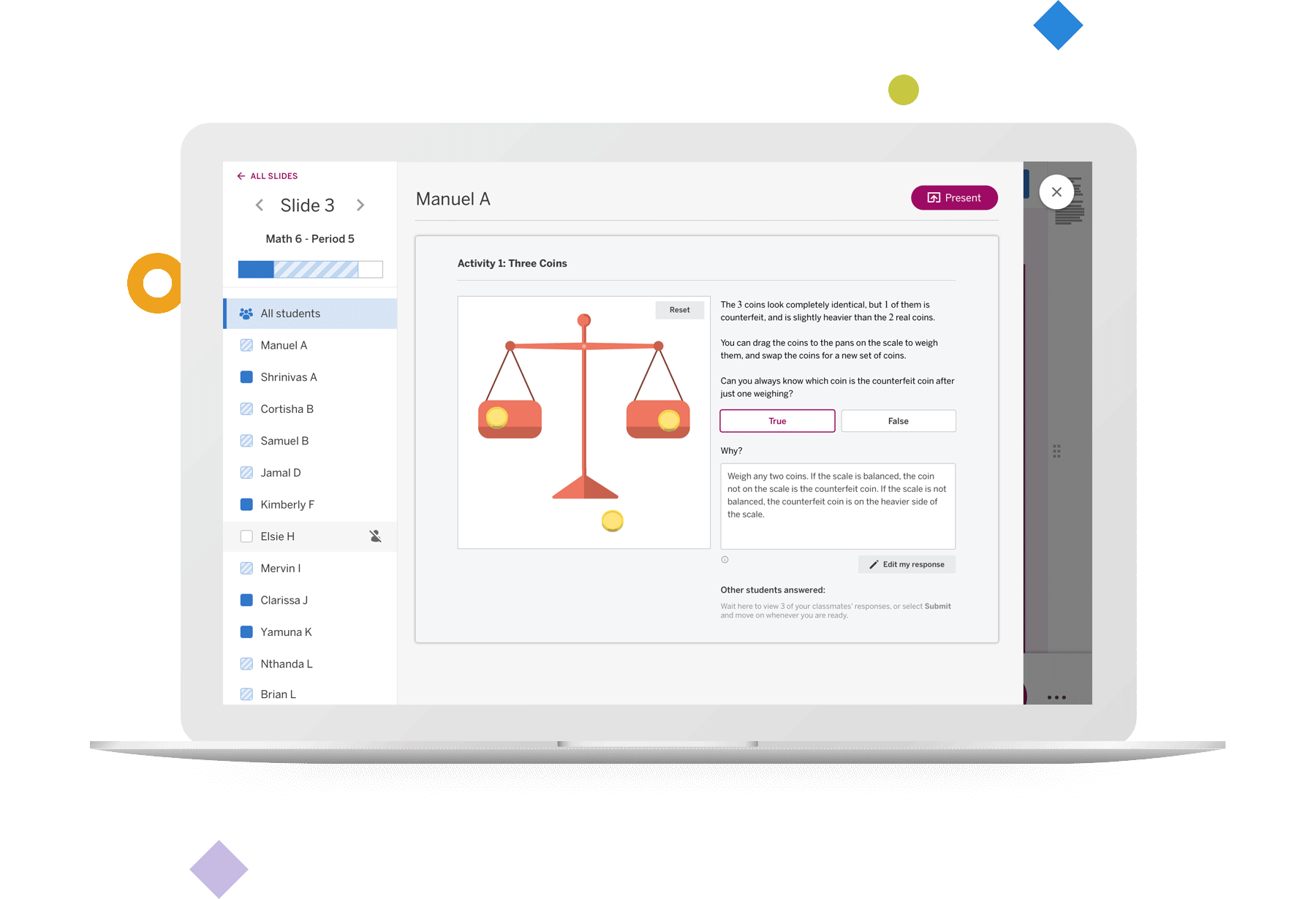
How teachers can address math anxiety
No one is born knowing the quadratic formula, or how to measure a triangleãmath needs to be taught.
Likewise, no one is born a ãmath personããor not a math person. And no one is born with math anxiety.
ãChildren don’t come with math anxiety,ã says Dr. Rosemarie Truglio, senior vice president of curriculum and content for Sesame Workshop and a guest on Math Teacher Lounge. ãMath anxiety is learned.ã Thatãs actually good news because it means can be unlearned, too. We can teach students (and even teachers) how to overcome it. In this post, weãll cover some helpful learning strategies, teacher tips, and supports for caregivers.
Anxiety inãand beyondãthe math classroom
First, letãs review what math anxiety is and is not.
Math anxiety is more than just finding math challenging, or feeling like youãre not a math person. Dr. Gerardo Ramirez, associate professor of educational psychology at Ball State University, defines it as ãa fear or apprehension in situations that might involve math or situations that you perceive as involving math. Anything from tests to homework to paying a tip at a restaurant.ã Hereãs what else we know:
- Causes: Math anxiety is not correlated with high or low skill or performance. For students whoãve been pressured to excel, math anxiety comes with the fear of not meeting expectations. For students who historically havenãt done well in math, the anxiety comes with the assumption theyãll do poorly every time. Other triggers include a mismatch between learning and teaching styles that can lead to struggle, or false cultural messages like ãgirls arenãt good at math.ã
- Consequences: People who suffer from math anxiety may deliberately avoid math, the consequences of which are obvious and far-reaching: not learning math at all, thus limiting academic success, career options, and even social experiences and connections. ( mentions real-lifeãand relatableãexamples of adults affected by math anxiety.)
- Prevalence: Math anxiety affects at least 20 percent of students, and parents and teachers can suffer from math anxiety, too. In fact, some research suggests that when teachers have math anxiety, itãs more likely that some of their students will as well. Luckily, those teachers and parents can also play a key role in helping students (and maybe even themselves) get more comfortable with math.
Addressing math anxiety in the classroom
Math anxiety can arise from the contexts and cultures in which students encounter math, so it makes sense that we can also create conditions that can help reduce itãand even prevent it from taking hold. Here are some key strategies for helping even the most math-anxious students thrive:
- Invite explicit conversation about math anxiety. In , Math Teacher Lounge podcast co-host Bethany Lockhart Jones recommends having open and direct conversations with all students about how doing math makes them feel. ãThe more you know about your studentsã ãmath stories,ã the more you can help them,ã she says.
- Build a positive, supportive, and collaborative math community where different learning styles and incorrect answersãoften fuel for math anxietyãare considered part of the learning process. Embracing and working from wrong answers encourages students to focus on the ãhowã of math. Students feel more comfortable asking questions, taking risks, and making mistakes (as well as learning from them).
How do you build a supportive environment in your math classroom?
- Cultivate a growth mindset. Create a culture where mistakes are not just acceptable, but inevitableãeven welcomed. Encourage perseverance and persistence. Emphasize that being challenged by a math concept doesnãt mean a student is inherently bad at math or just canãt do it.ô It means only that they canãt do it yet.
- Encourage collaboration. Promote a culture of cooperation and teamwork by incorporating group activities, peer support, and class discussions into your lessons.
- Play. Game-ifying problems and introducing friendly competition builds camaraderie and helps students find shared joy in mathãa win-win!
- Give students plenty of time. Alleviating the pressure of time constraints allows students to think more deeply, take brain breaks, make fewer rushed errors, and develop a sense of control and confidence. Here are some ways to build time into your math lessons:
- Allow students ample time to think when you ask them questions.
- Allow students to work on assignments in class with support and take them home to finish if they need more time.
- Consider giving tests and quizzes in two parts and allowing students to complete them over multiple days.
- Create a culture of revisions. Allowing students to revise homework assignments and tests/quizzes for partial credit will remind them that learning math is a process, not a mandate to get everything right the first time. This will help them deepen their understanding by learning from and correcting their errorsãand remind them that mistakes are part of growth.
- Use intentional language. The phrase ãThis is easyã might sound encouraging, but anxious students may hear it as ãYou should be able to do this.ã Instead, use such as ãThis problem is similar to when weãÎã or ãTry using this strategy.ã
Addressing math anxiety at home
Caregivers may be accustomed to reading to students at home, but sitting together and doing math? Probably less so. Some caregivers may even inadvertently perpetuate math anxietyãor the ideas that feed itãby repeating some of the associated stereotypes and misconceptions. (ãSorry, kiddo, grandpaãs not a math person.ã)
Teachers can address this by sending materials home to support caregivers in engaging kids in math. Math games, for example, offer a fun, accessible opportunity for home practiceãand they can even be played at , along with story time.
In general, teachers can also encourage caregivers to:
- Use and point out their use of math in the real world wherever possible.
- Help with math homework as much as possible.
- Use intentional, positive phrasing about mathãincluding about their own use of it.
Teachers have the ability to reduce math anxiety and help students unlearn the stereotypes associated with it by building a positive math ecosystem. They can build a positive community in their math classroom, set caregivers up for success in supporting students at home, and even shine a light on their own relationship to math.
To learn more, tune in to Season 5 of Math Teacher Lounge, dive into our , and read the rest of our math blog.



